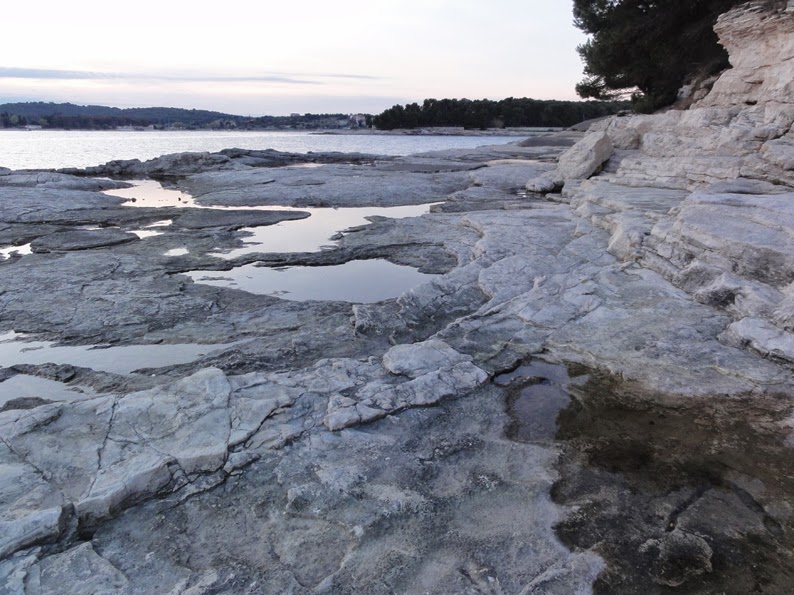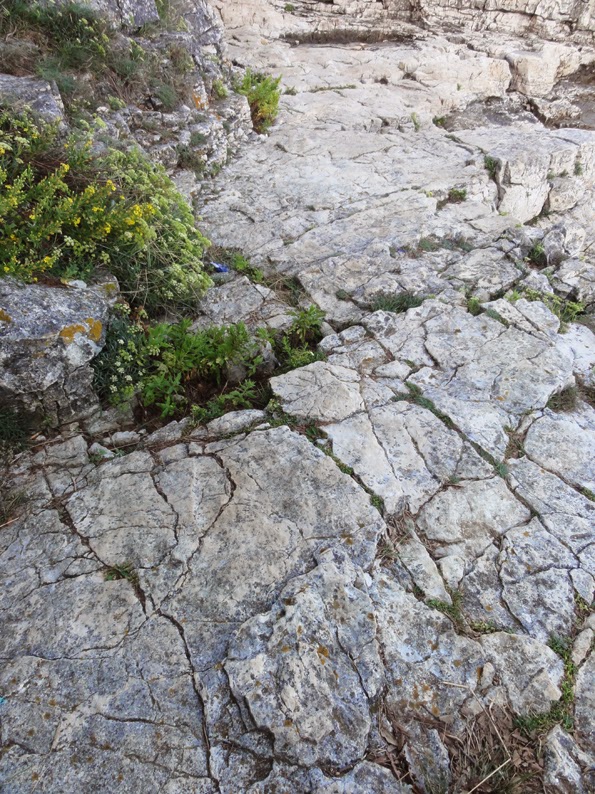A 100 milion years old "flip-flop" impression. It seems like a No.46 or 47 compared to my own shoe.
It's a kind of track the creationists would probably die for. However, it is probably a large fish bottom-feeding trace (possibly Acipenseridae). I have found many similar traces in Pula rocks.
The view at the Cape Stoja (Pula)
Pula rocks.
A nice amphitheatre carved in stone by the nature (Pula)
The cliffs in Pula eroded by the strong waves.
An interesting Pula outcrop that looks like a fresh mud, but it's a solid 100 million years old rock. It has traces of a strong current. Probably because of the fast receding tide. An unidentified dinosaur left its footprints in this ancient mud.
I am always puzzled and frustrated when finding a track that I can't figure out. Here is a manus pes set from Pula. At first, I thought it might have belonged to a small ankylosaur. However, it has a certain resemblance to a crocodilian manus pes set. I am biased towards the ankylosaur provenance. On the other hand, the more I look at it, the more it looks like a crock's track to me.
A large, slender (?) theropod footprint with relatively long toe #3. It is a part of a rather poorly preserved trackway (Pula, late Albian).
The early Cretaceous track bearing rocks in Pula.
Of course, most of the old buildings in Istria were built from the Istrian limestone (kirmenjak). Some Italian cities like Venice, too. The sun clock on the Bembo-Soardo Palace in Bale.
Fossil track bearing rocks on Pula beach. A large theropod (?) footprint can be seen at the bottom centre of the picture.
Fossil stromatolites on Pula beach.















No comments:
Post a Comment